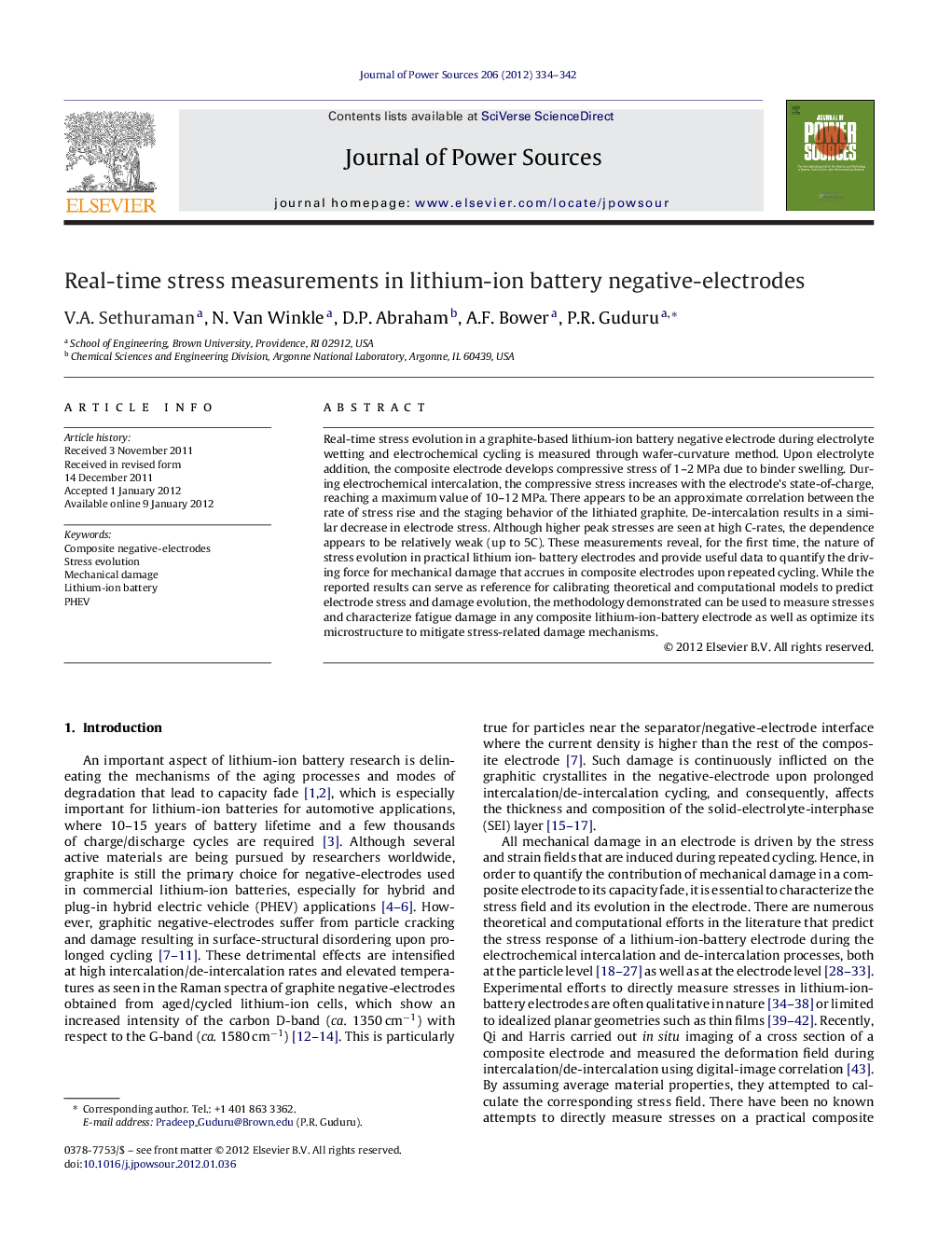| کد مقاله | کد نشریه | سال انتشار | مقاله انگلیسی | نسخه تمام متن |
|---|---|---|---|---|
| 1293095 | 1498026 | 2012 | 9 صفحه PDF | دانلود رایگان |

Real-time stress evolution in a graphite-based lithium-ion battery negative electrode during electrolyte wetting and electrochemical cycling is measured through wafer-curvature method. Upon electrolyte addition, the composite electrode develops compressive stress of 1–2 MPa due to binder swelling. During electrochemical intercalation, the compressive stress increases with the electrode's state-of-charge, reaching a maximum value of 10–12 MPa. There appears to be an approximate correlation between the rate of stress rise and the staging behavior of the lithiated graphite. De-intercalation results in a similar decrease in electrode stress. Although higher peak stresses are seen at high C-rates, the dependence appears to be relatively weak (up to 5C). These measurements reveal, for the first time, the nature of stress evolution in practical lithium ion- battery electrodes and provide useful data to quantify the driving force for mechanical damage that accrues in composite electrodes upon repeated cycling. While the reported results can serve as reference for calibrating theoretical and computational models to predict electrode stress and damage evolution, the methodology demonstrated can be used to measure stresses and characterize fatigue damage in any composite lithium-ion-battery electrode as well as optimize its microstructure to mitigate stress-related damage mechanisms.
Figure optionsDownload as PowerPoint slideHighlights
► Real-time stress evolution in a practical lithium-ion electrode is reported for the first time.
► Upon electrolyte addition, the electrode rapidly develops compressive stress (ca. 1–2 MPa).
► During intercalation at a slow rate, compressive stress increases with SOC up to 10–12 MPa.
► De-intercalation at a slow rate results in a similar decrease in electrode stress.
► The stress-evolution shows little dependence on discharge rate (up to 5C).
Journal: Journal of Power Sources - Volume 206, 15 May 2012, Pages 334–342